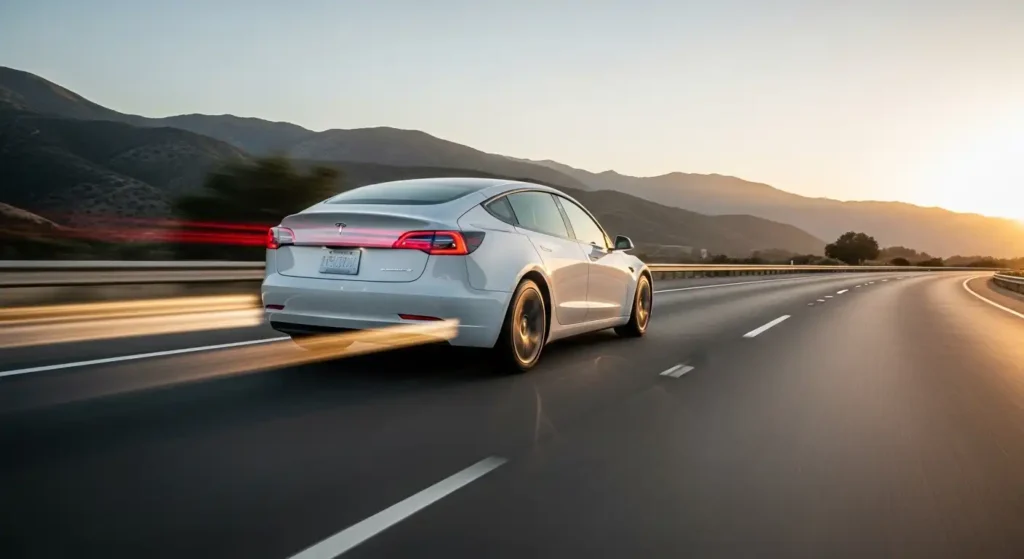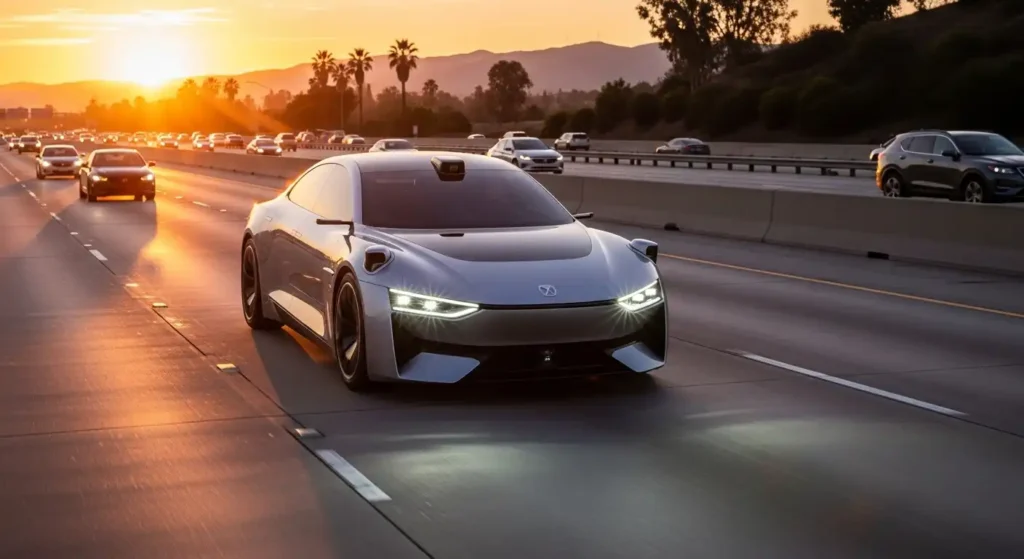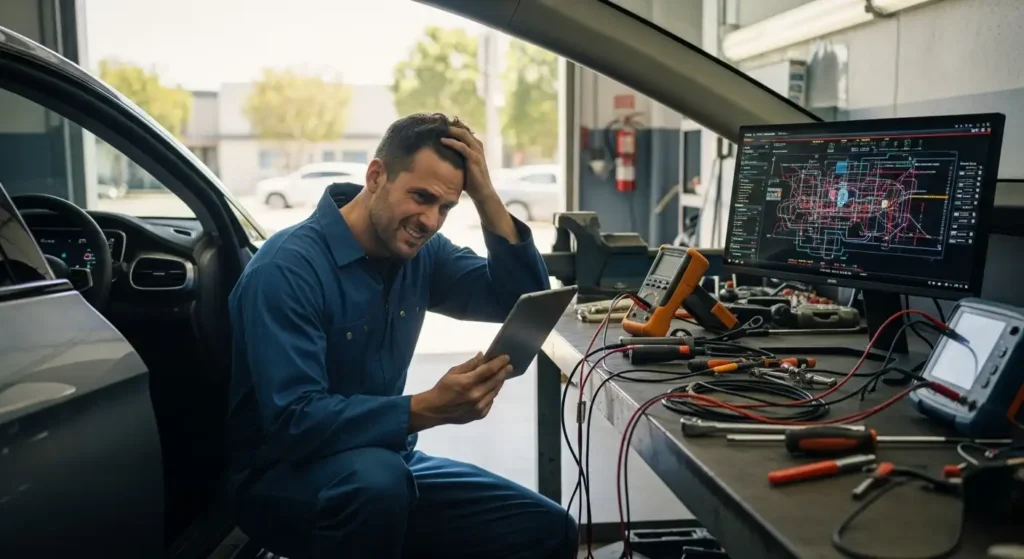What Exactly Is a Software-Defined Vehicle?
A software-defined vehicle is one where software controls the majority of its functions. Instead of relying only on fixed hardware, SDVs receive over-the-air (OTA) updates that enhance performance, safety, and convenience features. The car evolves much like a smartphone, improving long after it leaves the showroom floor.
For example, an SDV might launch with 300 horsepower. Months later, the manufacturer could release a paid update that increases acceleration or extends battery range. This flexibility is what sets SDVs apart from traditional vehicles.
A Brief History of Software in Cars
Although SDVs sound futuristic, software has quietly shaped automotive design for decades:
- 1980s: The rise of Electronic Control Units (ECUs) for fuel injection and ignition control.
- 1990s: Introduction of onboard diagnostics (OBD-II), giving mechanics digital access to performance data.
- 2000s: Widespread adoption of infotainment systems, GPS navigation, and electronic stability control.
- 2010s: Tesla popularized OTA updates, making cars smarter without dealer visits.
- 2020s: Automakers shift toward centralized computer architecture, paving the way for fully software-defined platforms.
From simple ECUs to full operating systems, cars have been steadily evolving into digital machines.
 How Software-Defined Vehicles Enhance Performance
How Software-Defined Vehicles Enhance Performance
One of the most exciting aspects of SDVs is their ability to improve performance through software. Instead of expensive aftermarket modifications, many upgrades can now be delivered digitally:
- Over-the-Air Power Boosts: Tesla’s “Acceleration Boost” increases 0–60 mph times through a software unlock.
- Adaptive Driving Profiles: Dynamic suspension, throttle, and steering responses tailored to comfort, sport, or off-road driving.
- Battery Optimization: EVs receive updates that extend range and improve charging efficiency.
- Track Packages: Future SDVs may allow downloadable track modes that unlock advanced performance features for racing enthusiasts.
 The Benefits of Software-Defined Vehicles
The Benefits of Software-Defined Vehicles
SDVs deliver wide-ranging benefits:
- Future-Proofing: Cars remain competitive years after purchase thanks to updates.
- Personalization: Owners can tailor features, from cabin lighting to horsepower output.
- Lower Costs: Many upgrades are digital, avoiding costly physical modifications.
- Enhanced Safety: ADAS (Advanced Driver Assistance Systems) continuously evolve to prevent accidents.
- Eco-Friendly: Software maximizes energy efficiency, reducing emissions and waste.
 The Risks and Challenges of SDVs
The Risks and Challenges of SDVs
Despite their promise, SDVs raise important concerns:
- Data Privacy: Connected cars generate vast amounts of personal data that could be misused.
- Cybersecurity: Hacked vehicles pose serious risks to safety and security.
- Subscription Models: Automakers may lock essential features behind recurring fees, increasing costs for consumers.
- Repair Restrictions: Independent mechanics may be locked out of proprietary systems, raising repair costs.
- Digital Divide: OTA updates require strong internet connectivity, which is not available in every region.
Real-World Examples of Software-Defined Vehicles
Several automakers are already proving the potential of SDVs:
- Tesla: Pioneered OTA updates, offering performance boosts, autopilot improvements, and entertainment apps.
- BMW: Experimenting with heated seats and driver-assist features as subscriptions.
- Mercedes-Benz: Offering horsepower upgrades on EQ electric models via software unlocks.
- General Motors: Developing the Ultifi platform, a unified software system for its EV lineup.
- Ford: Rolling out BlueCruise driver-assist updates through OTA improvements.
The Technical Backbone of SDVs
To understand SDVs, it helps to look under the hood of their digital architecture:
- Centralized Computing: Replaces dozens of ECUs with high-performance chips.
- Cloud Connectivity: Constant link to automaker servers for updates and diagnostics.
- Artificial Intelligence: Machine learning optimizes routes, predicts failures, and enhances performance.
- Digital Twins: Virtual models of vehicles help simulate performance and anticipate maintenance needs.
Impact on Car Enthusiasts
For car enthusiasts, SDVs present a mix of excitement and concern:
Upside: Performance tuning is easier than ever. Enthusiasts may purchase digital tune packs, track modes, or adaptive suspension settings without needing hardware changes.
Downside: Automakers may lock systems, limiting the ability of enthusiasts to modify cars independently. This could reduce the thriving aftermarket tuning industry.
However, just as ECU remapping became a trend in the 2000s, we can expect a new wave of “software tuners” offering custom code, hacks, and mods for SDVs.
Consumer Impact: What It Means for Everyday Drivers
Beyond enthusiasts, SDVs also impact average car buyers:
- Longer Lifespans: Cars stay relevant longer through continuous updates.
- Safety Gains: New features reduce accidents and fatalities.
- Ownership Costs: Predictive diagnostics minimize expensive breakdowns.
- Subscription Costs: Buyers may face new monthly fees for features once included in the purchase price.
This dual effect means consumers must weigh the value of software-based features against potential added costs.
Government Regulation and Policy
As SDVs grow, regulation becomes essential:
- Cybersecurity Standards: Governments must enforce strict protections against hacking.
- Right to Repair: Legislation may be needed to ensure independent garages can access software for repairs.
- Data Privacy Laws: Clear rules are needed on how automakers collect and use consumer data.
Without strong policies, consumers risk losing control over their own vehicles.
Case Studies of SDV Adoption
Tesla Model 3: Owners who purchased the optional acceleration boost saw their 0–60 mph time improve dramatically—without touching the engine.
BMW Subscription Services: The company faced backlash when it experimented with charging monthly fees for heated seats, highlighting consumer resistance to over-monetization.
Mercedes EQS: A luxury EV that allows owners to unlock additional horsepower through software purchases, blending luxury with flexibility.
The Future of SDVs
Looking ahead, industry analysts predict that by 2030, the majority of new cars will be software-defined. The future could include:
- Integration with Smart Cities: Cars talking to traffic lights, charging stations, and roads to improve flow and safety.
- Continuous Innovation: Monthly updates that keep cars fresh and competitive.
- Mobility as a Service: Drivers paying for features only when they need them, from self-driving to performance boosts.
- New Aftermarket Economy: Software tuners, coding shops, and app stores for vehicles.
Frequently Asked Questions About SDVs
Are software-defined vehicles only electric?
No. While many SDVs are electric, traditional internal combustion vehicles can also adopt centralized computing and OTA updates.
Do SDVs cost more than regular cars?
Initial costs may be higher, but long-term savings from fewer repairs and continuous upgrades could offset the price.
Can independent shops still repair SDVs?
In some cases, yes—but access may be restricted without regulatory support for right-to-repair laws.
What happens if the software crashes?
Like any computer, SDVs may experience glitches. However, manufacturers typically include redundancies and fail-safe systems to keep cars safe even during software errors.
Conclusion
Software-defined vehicles mark a historic shift in automotive history. They promise performance upgrades at the tap of a button, enhanced safety through constant updates, and personalized driving experiences. At the same time, they raise valid concerns around privacy, subscriptions, and repairability. For enthusiasts and everyday drivers, the future is clear: cars are no longer just machines—they are evolving digital platforms. Embracing this change while ensuring fairness and security will shape the next generation of mobility.

 How Software-Defined Vehicles Enhance Performance
How Software-Defined Vehicles Enhance Performance The Benefits of Software-Defined Vehicles
The Benefits of Software-Defined Vehicles The Risks and Challenges of SDVs
The Risks and Challenges of SDVs